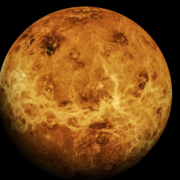Venus can’t wait—NASA plans blockbuster return to hothouse neighbor
WASHINGTON, D.C.—Venus can no longer wait. NASA will send two new robotic missions to Earth’s hothouse twin, the agency’s new administrator, Bill Nelson, announced this afternoon at his “state of NASA” speech here at the agency’s headquarters. The announcement effectively creates a new Venus program in one fell swoop.
The missions, together costing up to $1 billion, mark NASA’s first visit to the planet since the early 1990s, whereas nearby Mars has seen a host of robotic visitors. They’re expected to launch by the decade’s end. “We hope these missions will further our understanding of how Earth evolved and why it’s currently habitable when others in our Solar System are not,” Nelson, a former senator, said while announcing the selection. “This is really exciting stuff.”
Planetary scientists who study Venus were elated at the news, after decades of failed proposals—including previous incarnations of the selected missions. “I am stunned. Very emotional,” says Patrick McGovern, a planetary scientist at the Lunar and Planetary Institute. McGovern and colleagues had long argued that sustained study of Venus, like the landings on Mars, could revolutionize the understanding of Earth’s early history. One mission alone would not do it. “And guess what, in one fell swoop NASA created that #VenusProgram, with two outstanding missions.”
The first mission selected from four finalists named in February 2020 is DAVINCI+ (Deep Atmosphere Venus Investigation of Noble gases, Chemistry, and Imaging Plus) from NASA’s Goddard Space Flight Center and led by James Garvin, chief scientist of Goddard’s scientific division. It will send an armored sphere plunging through the venusian atmosphere, its instruments measuring noble gases to sort out the planet’s origins and sniffing for sulfur and carbon near the surface for evidence of recent volcanic activity. DAVINCI+ will also include an orbiter to map the planet’s geology, including its mysterious highlands. (A previous DAVINCI proposal was led by Lori Glaze, now chief of planetary science at NASA headquarters, who excused herself from the mission selection process.)
Analyzing isotopes of these noble gases in the atmosphere could give scientists a window into whether Venus started with as much water as Earth—and whether the planet might still be hiding water, the lubricant of plate tectonics, deep in its interior. Probing the rock composition could reveal whether, as some researchers suspect, the slightly elevated regions called tesserae are remnants of continents.
The second Venus mission is VERITAS (Venus Emissivity, Radio Science, InSAR, Topography, and Spectroscopy) from NASA’s Jet Propulsion Laboratory and led by Suzanne Smrekar, a planetary scientist at JPL. It will use synthetic aperture radar to peer through the planet’s thick clouds and re-create its topography, revealing whether volcanoes or variants of tectonic plates are active on its surface. Previous missions have revealed evocative evidence of hot spots but lacked the resolution to answer questions about why Venus’s fate differed so starkly from Earth’s.
The high-resolution radar could reveal surface features lost in the noise of old measurements, Smrekar says: perhaps chasms that resemble Earth’s midocean ridges, or the details of mysterious oval-shaped features called coronae, which could mark where plumes of hot material from Venus’s mantle are causing parts of the crust to sink under others. Smrekar suspects Venus is a good analog for the time when plate tectonics began on Earth. Its greenhouse-heated surface is cooling much more slowly than Earth’s and may only now be starting to crack into plates.




